You’ve done the research, found suppliers, ordered samples, and finally placed a large bulk order. Congratulations on making it this far into your Amazon seller journey! Now, what do you do while you wait for your products to arrive?
The work doesn’t stop here. Don’t just wait around and forget about Amazon — it’s important to stay active in the community, keep your knowledge up to date, and prepare your account for when you’re ready to go live.
There’s plenty you can do such as optimize your listing, familiarize yourself with Seller Central, do keyword research and rank tracking, and test out other Amazon business models. Take advantage of this period and your future self will thank you!
Let’s go over what you can do while you wait for your private label product to arrive, and the benefits of staying on top of your game.
Things you can do while waiting for Amazon inventory
Shipping your products from overseas can take quite a bit of time, especially if you are shipping by sea. Staying active and prepared is what will set you up for success once your product is live on Amazon. Here are some actionable steps you can take:
Keyword research and tracking
Even if you conducted keyword research while searching for the right product to sell (which you should have), we suggest repeating this step regularly to be sure your keyword targeting is up to date. On top of that, it is very important to keep track of where your competitors are ranking for those same keywords.
Relevant keywords are crucial to the success of your listing. Without keyword-optimized listings and PPC campaigns, customers will not be able to find and purchase your products.
Over the course of 2-3 months, or however long it takes for your product to ship, a lot can change. There could be new potential keywords, search volume can increase or decrease, competitors’ ranks may shift, and so on. It doesn’t hurt to do fresh keyword research before your product launches.
Using Jungle Scout’s tools, you can easily research and track keywords, including your competitors’.
Keyword Scout: This tool shows you the exact keywords customers are actively searching for on Amazon when shopping for your type of product. You can enter broad keywords to discover more relevant, high-converting keywords and conduct reverse-ASIN searches to uncover which keywords your competitors are ranking for.
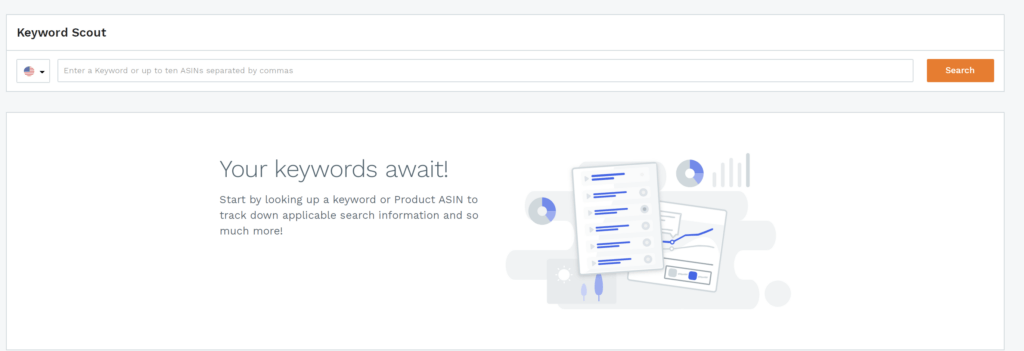
Rank Tracker: Discover the historical performance of specific keywords and see which ones influence sales the most on your listings and your competitors’ listings. This tool is powerful — you can see your competitors’ keyword performance, and you can analyze ranking trends over time to see if a product is losing or gaining popularity.
Optimize your listing
This may seem obvious but many new sellers wait until the last minute to write and optimize their listings on Amazon. Start this process early on before your product arrives so you have plenty of time to make it the best it can be. Optimizing your listing includes adding relevant keywords to your copy, and using informative and compelling content for your images, infographics, and A+ content (if you’re enrolled in Brand Registry).
If you wait until your product arrives at an FBA fulfillment center and write your listing information at the last minute, you might forget to consider important information, keywords, and images. If that’s the case, you can count on your listing to underperform. Without the right keywords, customers cannot find your listing. If they do, they may not convert if the listing does not provide them with the specific information they’re looking for.
Luckily, Jungle Scout has some great tools to help you write a keyword-rich listing.
Use Keyword Scout to see what your competitors are ranking for and to find unique keyword ideas for your products.
Use the Listing Builder to help create a well-optimized listing for your product. It gives you an instant score for your listing so you know how likely it will rank and convert sales.
Listing optimization tips:
- Include your top 3-5 keywords within your title to improve search rankings and click-through rates.
- Have professional photos taken of your product — don’t use stock photos or take photos with a phone.
- Hire a graphic designer to create infographics that stand out and highlight the unique features of your product.
- Use all of the available image space Amazon allows — you can upload up to 9 images.
- Write informative and compelling bullet points — teach sellers about your product’s benefits and features and show them why they should buy from you.
- Enroll in Brand Registry and learn to create A+ listing content.
- Grow your review count by using Jungle Scout’s Review Automation tool.
Product photography
Unless you have a great camera or happen to be a photographer, it is best to hire a professional to do your product photography. With so much competition out there, you need to make sure your Amazon product images are the best they can possibly be.
Professional rates start at $200 to $300 for product photography but it is worth the investment. You’ve come this far — don’t cheap out on this part!
Take a look at your competitors’ listings and evaluate their images. Are they missing certain angles? Is the quality poor? Do they have enough images on the listing? How can you make your own images better?
Of course, make sure to read and understand Amazon’s product image requirements before producing assets for your listing.
Product image tips:
- Your main image must have a pure white background — you are not allowed to use color, borders, text, added logos, or other elements.
- Add eye-catching graphics and informative text to the additional listing photos to help customers learn more about your product.
- Use lifestyle images that show your product in use so the customer can picture themselves using it.
- Show every angle of the product possible — this helps the customer to visualize and evaluate it, as they cannot experience your product in person before purchase.
- If your product can solve a problem for the customer, show before and after photos to demonstrate its benefits.
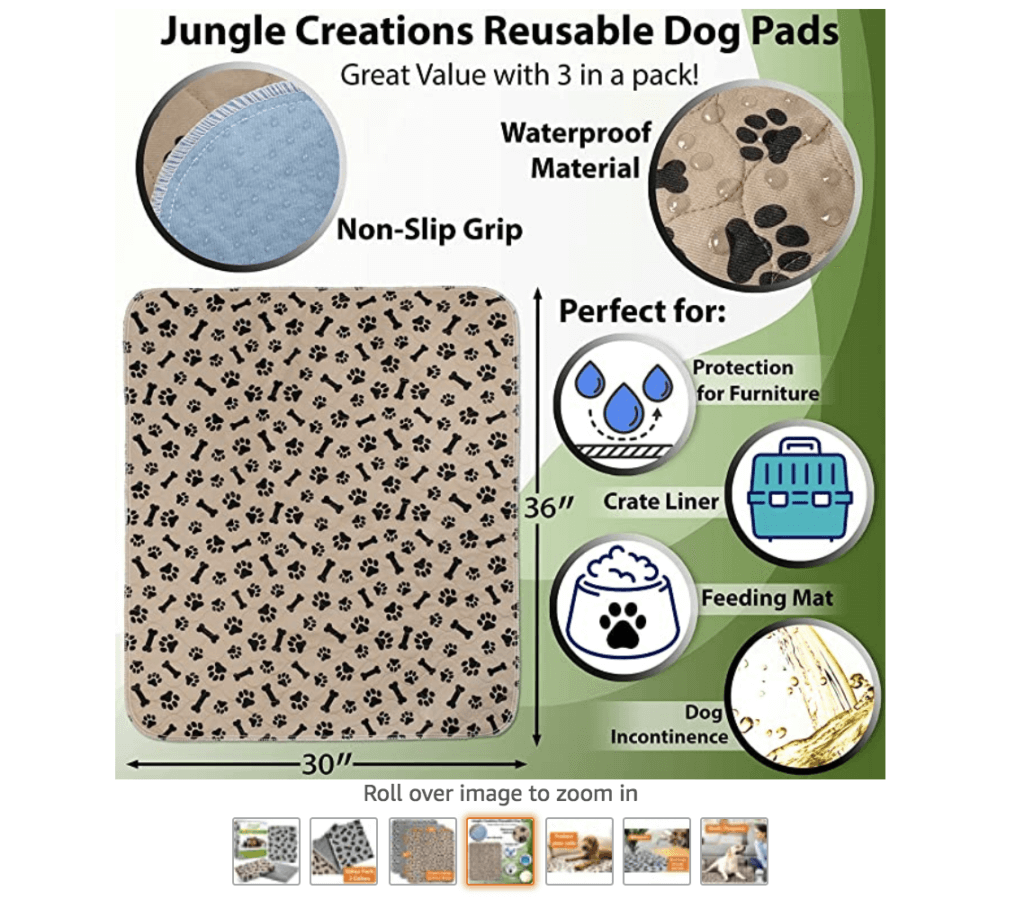
Connect Jungle Scout to Seller Central
While you wait for your products to arrive at an Amazon Fulfillment Center, take this time to sync your Seller Central account and Jungle Scout, so you can be ready to collect your sales data.
As soon as sales start to roll in, Jungle Scout will be able to analyze that data for you so you know exactly what is going on in your business. You’ll get to see sales by product, understand profit and loss, add custom expenses, and analyze your PPC data.
You can also use Jungle Scout to receive alerts about your business, gain more product reviews, and push listing updates to your Seller Central account.
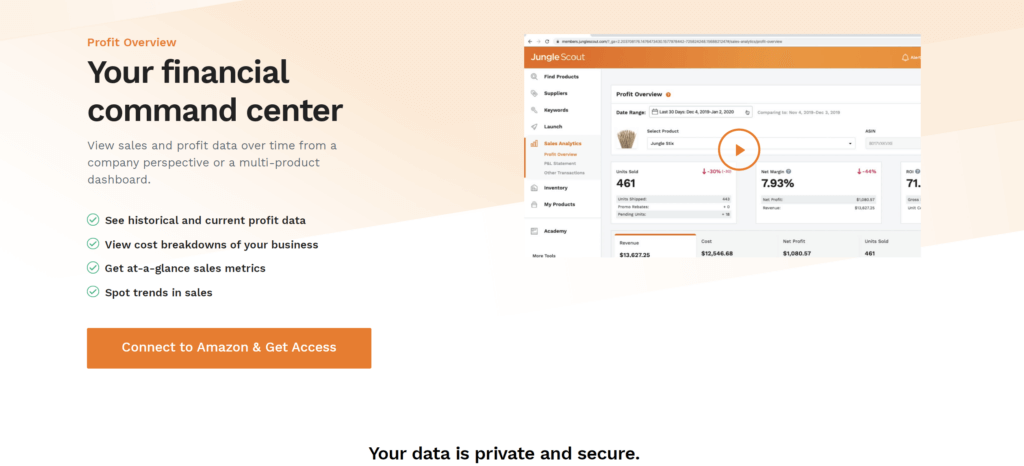
What tools can you connect to Seller Central?
Sales Analytics: Keep track of every sale and expense your Amazon business receives so you have a full understanding of its financial health. With just Seller Central’s reports, it can be hard to figure out your exact profitability after Amazon fees, product costs, PPC costs, and so on. When you sync your Seller Central with Sales Analytics, you know exactly what you’re making and losing.
Inventory Manager: This powerful tool will help you figure out how much inventory your business requires based on past sales history. It will accurately predict how much product to order based on demand so you never go out of stock or overstock your inventory.
Alerts: Stay informed about critical changes to your Amazon business so you can act fast. This tool will send you daily performance reports via email, which includes changes in price and new reviews. It will even tell you if a new seller has hijacked your listing.
Review Automation: Easily automate and gain new reviews for your Amazon listings with our powerful Review Automation tool. This set-it-and-forget-it tool will automatically send review requests to customers for you, so you don’t have to lift a finger.
Listing Builder: Write and optimize your Amazon listings here. Listing Builder will even give you a listing optimization score so you know how well your listing will perform. Once your listing is complete, you can push the changes directly to Seller Central, instead of manually copying and pasting information.
Create your PPC campaigns
While you have the time, work on setting up your PPC ad campaigns so they’re ready to go once your product is live. Don’t rush this part — carefully create each campaign as it will help get your product off the ground when it is launched.
It is tough to get the initial impressions and sales needed for a brand new product unless you have a popular brand that customers already search for, or an existing audience to promote your product to.
We recommend setting up automatic and manual Sponsored Product ad campaigns when launching a product. This will give you maximum exposure and data you can use to further optimize each campaign.
Take this downtime to explore Jungle Scout’s many resources to help you set up and optimize your ad campaigns properly:
2021 Amazon Advertising Guide for Sellers
Amazon Sponsored Product Ads 2021 Guide
How Much Do Amazon Ads Cost in 2021?
What Are Amazon Sponsored Display Ads & Are They Worth It?
How to Use Amazon Sponsored Brands Ads
How to Use Sponsored Brands Video Ads on Amazon
Join online seller communities
A great way to stay up to date with what’s going on in the Amazon seller world is to join online seller communities. This includes forums, Facebook groups, Instagram pages, and Discord chats, to name a few.
Not only will community engagement help to keep you informed on all things Amazon, but you’ll also be surrounded by like-minded sellers you can connect with and learn from. Ask questions, seek advice, and learn something new every day from more experienced sellers.
Becoming an active member in an online seller community will help you become a better entrepreneur.
A great way to start is to search on Facebook for “Amazon seller groups” or something similar. You will find many types of seller groups to explore and join.
One of the best groups around is Jungle Scout’s Amazon FBA Competitive Edge Facebook group! It’s a supportive and energetic community where you can ask questions and learn from other sellers’ experiences. You will be amazed at how helpful some members are.
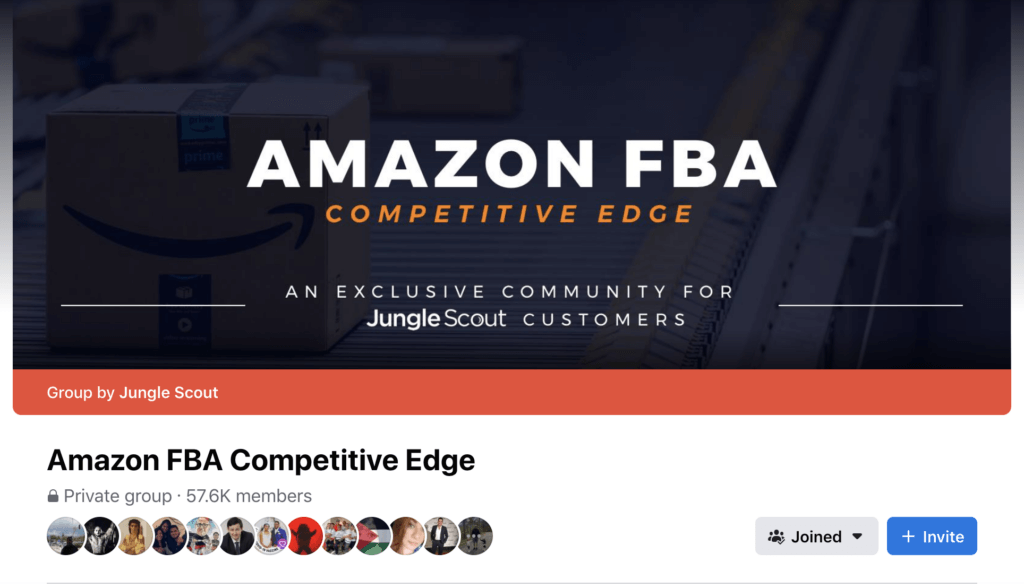
Continue your seller education
There is always so much to learn and test when you become an Amazon seller. From product research to navigating Seller Central, there is never a shortage of topics you can dig deeper into and learn more about.
It’s important to keep all this information fresh in your mind if you want to succeed as a seller. While waiting for your product to arrive, try this pro tip from our own Jungle Scout seller community: set a small daily goal for yourself to learn something new for your business such as watching a YouTube video on Amazon advertising or reading one of Jungle Scout’s many blog posts.
If you complete at least one small educational task like this per day, you will be an expert by the time you’re ready to launch!
What else can you do? Test out another business model on Amazon. Learn the process of listing creation and sending products to FBA with retail arbitrage or wholesale. Seller Central can be tricky to learn so this is a great way to practice. These two business models are great, low-cost ways to sell products on Amazon — you aren’t limited to selling private label products.
Jungle Scout content
Want to learn from the best? Jungle Scout has lots of free and paid resources you can access to learn more about selling on Amazon, created by our team of experts:
Potential shipping delays
As an Amazon seller, you always have to be prepared for the worst-case scenarios. As of this writing, COVID restrictions in China continue to strain the supply chain and cause major shipping delays, disrupting businesses around the world.
Something like this is hard to plan for but as your business grows, you may have the ability to order extra inventory in case of a supply chain disruption. The holiday season also has its expected share of shipment delays. Make sure you prepare for the busiest time of year and order inventory at least 2-3 months ahead of the holiday season.
Developing a strong relationship with your supplier can also help ease some unforeseen delays. They may prioritize your orders over other companies if you are loyal, respectful, and have a solid working relationship.
One thing you can do in case of shipping delays is to place a smaller order with your supplier that can be shipped by air express versus a slow sea shipment. It may be more expensive to ship by air but this will help ease any inventory constraints you may experience.
Pay attention to what is going on in China or wherever you source from, so you’re always ahead of the curve.
Stay proactive in your Amazon business
Selling on Amazon is not a “set it and forget it” type of business. If you want to succeed and beat out your competitors, you need to always think ahead! If you follow even just half of what we talked about in this guide, you will be in fantastic shape for when your products arrive.
Have any more questions for us? Leave us a comment below!

 7 Comments
7 Comments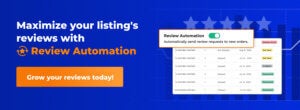
7 comments on “What To Do for Your Amazon Business While You Wait for Your Product To Ship”